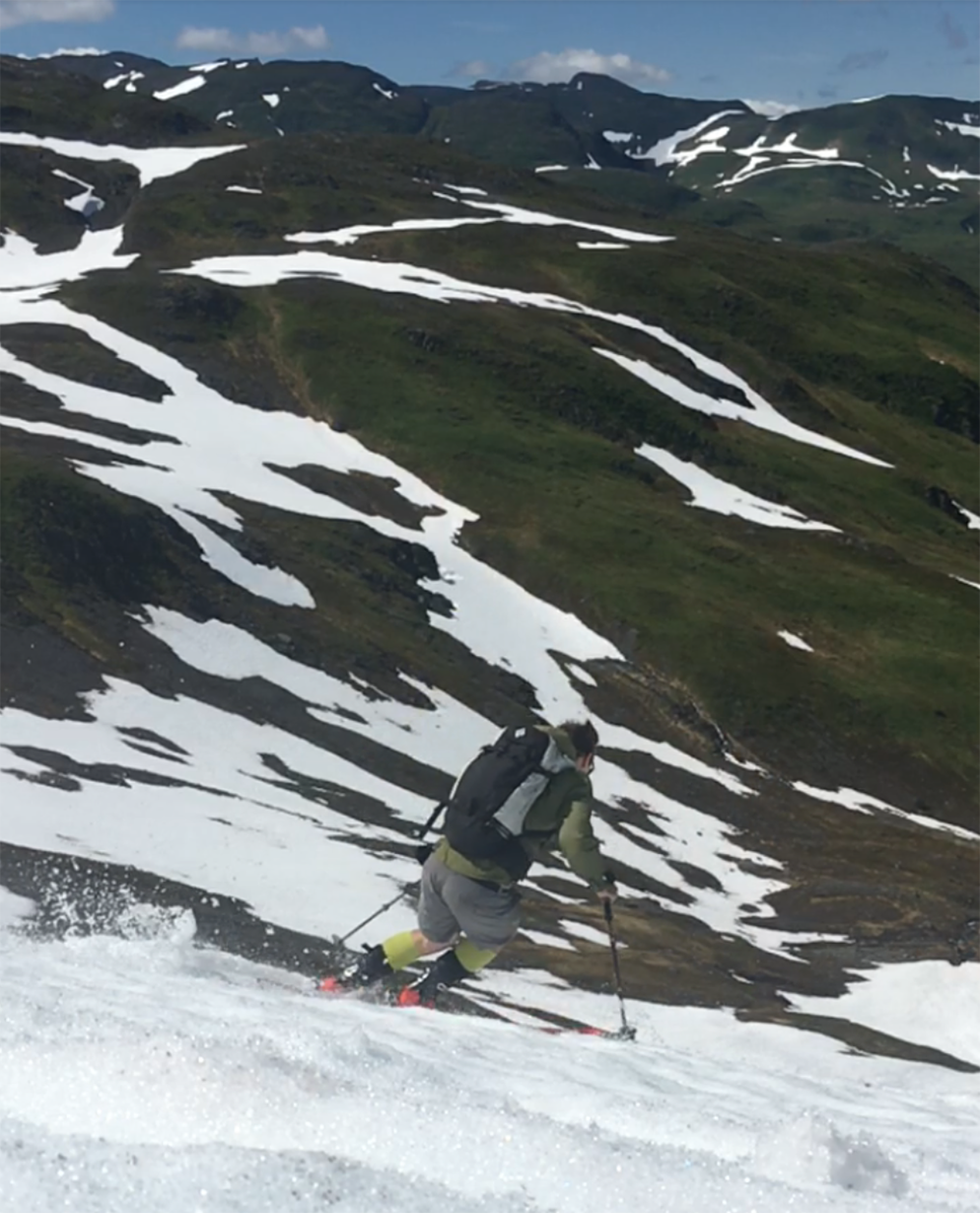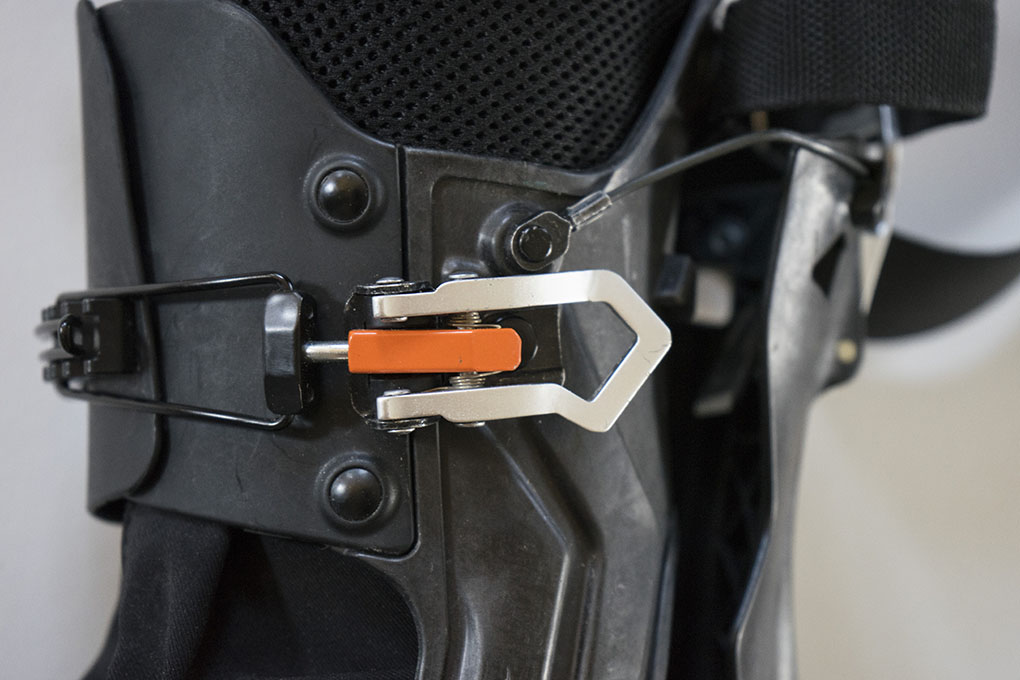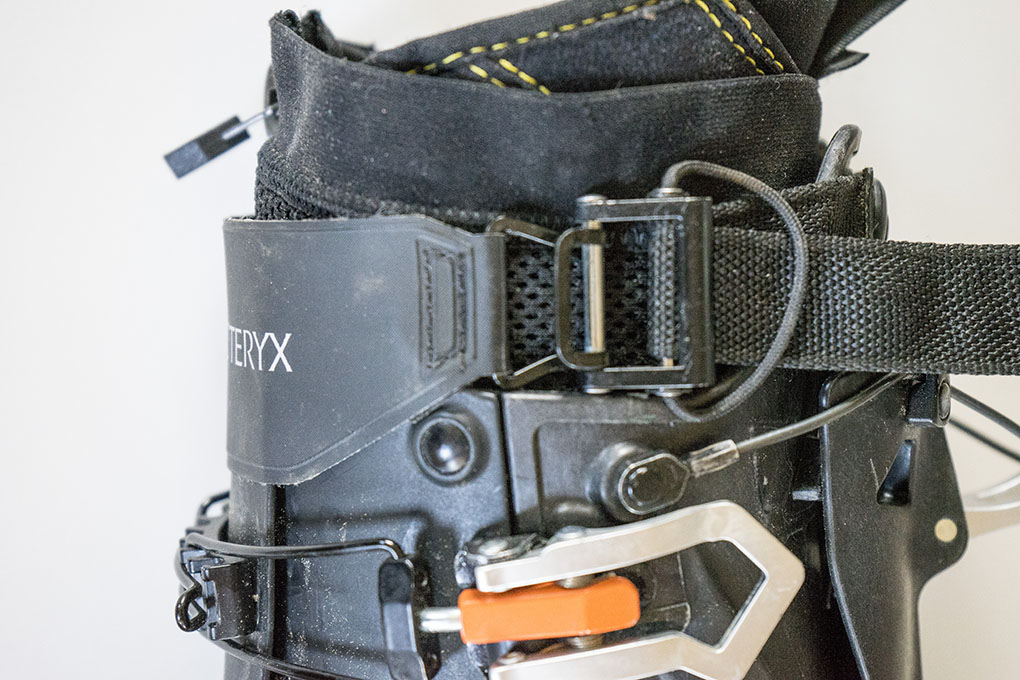
2020-2021 Arc’teryx Procline Carbon Support Boot
Size Tested: 27.5
Stated BSL: 295 mm
Stated Range of Motion: 75°
Stated Weight per Boot – size 26.5 : 1260 g
Blister’s Measured Weight per Boot – size 27.5:
• Shells, no liners: 1021 & 1021 g
• Liners, no footbeds: 267 & 265 g
• Shells + Liners: 1288 & 1286 g
MSRP: $1000 USD
Test Locations: Kodiak and Turnagain Pass, Alaska
Days Tested: 3
• Procline Carbon Support: 2 days
• Procline Support: 1 day
[Note: Our review was conducted on the 16/17 Procline Carbon Support Boot, which was not changed for 17/18, 18/19, 19/20, or 20/21, apart from graphics.]
Note: See our post regarding Arc’teryx’s voluntary recall of all Procline boots
Intro
Arc’teryx introduced the Procline like this:
“The only hybrid ski boot of its kind, the Procline Boot combines all of the features of a classic alpine climbing boot with those of a lightweight ski mountaineering boot to create a new benchmark of agility and lightness for mixed ice/rock ascents with unmatched support and power for technical ski descents.”
Arc’teryx is making two versions of the Procline shell — the standard Procline, and the Procline Carbon. And both shells are available with either the “lite liner” (~180 g in a size 27.5) that emphasizes “walkability and reduced weight,” or the “support liner” (~250 g in a size 27.5) which has “a reinforced tongue and collar for improved downhill performance.” All liners can be thermoformed for a customized fit.
Here, then, are the four available combinations:
• Procline Carbon Lite ($1000 USD) — weight: ~1190 g in size 27.5
• Procline Carbon Support ($1000 USD) — weight: ~1260 g in size 27.5
• Procline Lite ($750 USD) — weight: ~1190 g in size 27.5
• Procline Support ($750 USD) — weight: ~1287 g in size 27.5
I’m going to be talking here primarily about the Procline Carbon Support, which is the stiffest combination of shell + liner offered, but I’ve also spent some time in the non-carbon Procline, too.
The first pair of the Procline I received this winter was the non-carbon version, the Procline Support. And after just one day in it, I knew that it wasn’t going to be a boot I could use for ski touring due to its soft flex.
By the time I received the Procline Carbon Support, winter in Alaska had largely evaporated, so I have only been able to get a few days ski touring on high elevation summer snow. I’ll certainly update this review next fall and winter when I have more time in them, but I have enough time touring to get a good sense of the basics of this boot.

I should note that Arc’teryx emphasized that we should not be comparing this boot to dedicated ski-touring boots, because the Procline is designed to be in a class of it’s own as a “ski mountaineering boot.” So please keep that in mind.
But with that caveat, I feel that the Procline’s design and performance is similar enough to other boots in its weight category (e.g., Dynafit TLT6 Performance, Scarpa F1 Evo, and Atomic Backland Carbon) that it seems fair — and also helpful to potential buyers — to provide some comparisons.
Design — Materials, Cuff Assembly, Buckles, Powerstrap, Walk Mode
Every Arc’teryx product I’ve owned has had a refined and clean design with well-thought-out features. The Procline is no different in this regard, and has an impressive execution of existing design concepts in addition to a couple of novel features.
The shell is made of Grilamid with a welded-on textile gaiter and water-resistant zipper that essentially seals up from the toe to top of the boot. The zipper is a little tight, and I wouldn’t be shocked if it eventually wore out given that it will be zipped several times per day, often while dirty and under some stress. But so far, it’s working fine. I walked through ankle-deep water on several occasions and did get water into the shell, but only a tiny amount — so long as I moved quickly.
One unique feature of the lower shell is the rubberized area around the toe. I’ve already done a bit of rock scrambling in my pair and have put a couple of nicks in it. I can’t say that I’ve done anything yet where that rubber provided much benefit, but Arc’teryx intends the Procline to be ‘a climbing boot that skis’, and I imagine that people undertaking technical climbs will find it useful.
At first glance, the cuff assembly of the Procline Carbon (which is made mostly of molded carbon fiber) appears to be similar to the Dynafit TLT6 or the Atomic Backland. But close inspection reveals a y-shaped split in the inner portion of the 2-piece rear spoiler. This is meant to allow some lateral movement while the boot is in walk mode, which I’ll discuss below.
The buckles are similar to those found on other boots in this weight class, but as with many Arc’teryx products, the Procline Carbon seem to have just a little nicer ergonomics than others I’ve used, and I haven’t had any issues with them during my time in the boots.

One part of the design that I especially like is the powerstrap buckle that employs a very clever but simple mechanism for quickly tightening or loosening the power strap.

Unlike every other lightweight touring boot I’ve used (aside from the new Scarpa F1 Evo), the powerstrap on the Procline provides a significant amount of extra support. I would happily retrofit these onto any light touring boot.
The walk mode takes a bit more force to activate than those on the Atomic Backland Carbon or the Scarpa F1 Evo (manual version, not the Tronic one) and requires similar effort to the Dynafit TLT6. Once locked, there is zero play in the walk mode, and it feels very secure.
Liner
I’ve skied the Procline only with the “support” liner, and have been generally pleased. As with most touring boots on the market, it has a light heat-moldable tongue-style construction, with a stretchy insert over the achilles area to increase ROM when walking. Arc’teryx employs a clever webbing lacing system that secures with hook and loop fastener on the cuff. It’s a low profile design, and it’s the most nicely-executed liner lacing I’ve used. In fact, it’s probably the first liner lacing system that I’ll keep using, since with other boots, I’ve typically jettisoned them quickly after fussing with laces and buckles and the extra bulk.
My only quibble with the liner is that the stretchy insert over the achilles tendon is so soft and stretchy that my heel hangs up in it every time I try to pull the boot on, which makes it a bit more of a struggle than usual. The second time I put them on while out skiing, I tore off the webbing on the back of the liner that’s designed to help pull on the boot. So be careful.
Fit
It’s unclear to me exactly why, but every single lightweight touring boot I’ve owned (except for the 16/17 Scarpa F1 Evo) has a significantly lower-volume fit than any comparably-sized alpine boot. The Atomic Backland, TLT6, and now the Procline all have a very tight shell fit in my typical size 27.5, and have me wondering if I should size up. That said, the Procline feels a touch roomier in the forefoot than those other two boots, and is maybe a little bigger overall for the size. I may still do some toe box expansion in all of these boots, since Grilamid usually holds a punch quite well if done carefully. However, I’m not sure if punching the toe will interfere with the Procline’s glued-on rubber rand.
With the Support liner, the heel hold of the Procline is excellent for me, as is the ankle hold. I get no discernible movement of my relatively skinny ankle and heel.
NEXT: Walk Mode, Downhill Performance, Etc.

Your reviews are thoughtful and your self-reflection on what you are actually doing points toward solidly useful perspective.
With that said, have you done any technical climbing yet?
I would also be interested in any thoughts on how warm they are.
Just switched to Intuition liners in my Koflach ArctisExpe double plastics for Denali last June and absolutely loved the comfort and warmth. Hopefully these would be available for the ArcTeryx boot as well.
The usual program for warm feet on Denali also includes neoprene overboots, which I would not expect you would be testing.
It is time for me to replace my Koflachs so I am seriously considering a boot that can climb some vertical ice and negotiate something like the Upper West Rib while allowing reasonable ski mode with a backpack.
Thanks in advance
Hi Greg, I have not done anything beyond some rock scrambling and very minimal crampon work (aluminum crampons on frozen snow). I’ve also spent my share of days, albeit in the early 90’s, on Koflach’s. With that in mind I’d say a couple of things. First, the liner that comes with the Procline is quite nice and is made using foam similar to intuition’s and I suspect that will be reasonably warm. I’d try that first. You can always swap in an Intuition later if you preferred. I also have quite a few friends who have modified neoprene overboots to work with tech fittings for Alaska Range trips. I haven’t been up Denali but I will try to ski it one of these years and will probably take a boot like the Procline. If I were using them for a trip like Denali, I would probably size up though. I wear a 27.5 in most alpine boots but the 27.5 Procline was snugger than most boots I’ve used. I recently tried on a 28.5 and would go that route if I was worried about warmth.
I would not, however, be super excited about climbing serious water ice on them. I used to ice climb a lot in Koflach’s and then leathers and, despite the small flex in the cuff of the Procline, I don’t think they’d be fun for much other than slogging straight up with limited ability for more advanced footwork. I might be wrong about this though.
Hey Paul, great review. I’m thinking about making the shift from my Dynafit Titans to a pair of these. I’d actually like something a little softer flex (and absolutely lighter for longer tours) than the titans. I’m 6’2″, 190lbs — do you think the Procline Carbons would be a fair way to go?
Hi Kurt, Sorry for the delay. I think boots like the Procline would probably work for you. They are quite a bit softer and different in flex profile than the Titans but work fine for most ski touring objectives.
First of all – thanks for yet another thorough and insightful review! Then on to the question – i have a pair of these that i have yet to try, that i will use exclusively for walking from a to b type multiple day tours (usually with a few mountains thrown into the mix) with some bmt94s with vipecs (so i still expect to have quite the time going downhill). They will not be used as my one-day bigger ski touring boots as i have hawx 130s slated for that. I am expecting to use the proclines in some pretty harsh weather conditions that will probably be pretty cold as well. I have read other reviews stating that the procline is not the warmest of boots, and that its support is pretty on/off aka not terribly progressive. As such, i am wondering if swapping to a intuition liner could partially remedy both issues – aka both make the boot warmer and also add a bit more beef without adversely affecting the walkability of the boot in any significant way. The question is thus – what intuition liner would you recommend? I am not keen to do go down the traditional learning by burning route – having super cold feet sucks in a major way – so i would rather swap the liners to be on the safe side. Thanks in advance for any thoughts or inputs.